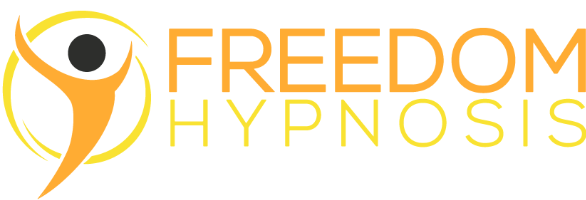There are a number of effective treatments for depression. As a Cognitive Hypnotherapist I know that there is no single treatment that works for everybody which is why I have many treatment options for my clients with depression (and anxiety). I trained in IEMT over five years ago and nothing in my arsenal has been more useful in helping clients quickly and easily recover from this debilitating condition.
By treatment, I do mean treatment. I don’t consider anti-depressants to be a treatment. When they work, all they they tend to do is allow a little comfort within the shrunken world of the depressive. Anti-depressants temporarily cover the symptoms, they don’t address the causes of the depression, they don’t teach the client to make the necessary adjustments to their lives to make a full recovery.
How Does Depression Start?
Before discussing the Eye Movement treatments, it’s worth asking the question, “How does depression start?” We aren’t born depressed, we’re born inquisitive, excited and energetic. Life and parenting teaches us where to set boundaries on our behaviour by teaching us what behaviour is likely to be painful, unproductive or outside of our skill set. Sometimes the boundaries are appropriate (not touching a hot stove) sometimes they are over-cautious, such as “dogs are dangerous!” One of the problems is that, for many people, they often fail to update as our age and competences increase. Martin Seligman coined the phrase ‘learned helplessness’ to describe the way that after several failures individuals stop looking for solutions. When, as a strategy, this becomes a chronic, we have the depressed person.
As an example, the guilt that we felt about the way we broke-up with out first love, can generalise to the idea of relationships generally, making them something to avoid. After that turbulent flight, the panic that we feel about flying makes the idea of a foreign holiday too painful to consider. Being bullied at school filled us with rage when we couldn’t prevent the unfairness, the same uncontrollable rage that now emerges at the bullying behaviour when somebody cuts us off whilst driving. At each stage some behaviour which could add to the quality of our life becomes a cause of pain. It also affects our self-esteem through our assessment of our own competence (I failed at this before) and worth (I’m ashamed at how I behaved before). Self-esteem is an unconscious assessment of our ability to thrive as well as an assessment of whether we deserve to thrive. When our self-esteem is challenged we no longer feel capable of meeting the regular challenges of life. The usual motivation we feel from the anticipation of engaging with life’s activities are replaced by hopelessness and fear.
Eye Movement Therapy (IEMT/EMI/EMDR)
Eye Movement Therapy works by removing the support structures of depression, by undoing the hold of these poorly learnt life lessons. There are several similar ‘Eye Movement’ therapies, such as Integral Eye Movement Therapy (IEMT), EMI and EMDR which are becoming common in therapeutic circles. Each therapy fits well within the Cognitive Hypnotherapy treatment methodology and IEMT, in particular, which was developed by Andrew Austin, incorporates the ‘Three Pillars of Depression’.
In terms of treatment, each method essentially acts in the same way. The therapist elicits the problem state and associated memories and then gets the client to deliberately move their eyes in a certain pattern, whilst they try to maintain the memory. It doesn’t sound much but the results are often astounding. The memory of the break-up, the plane journey, or barking dog doesn’t go away, but the emotion does! In most cases. In five years, I’ve never had the same painful experience come back once successfully treated.
How Does Eye Movement Therapy Work?
With my background in Cognitive Science I’d like to say that I have the answer to this question. I don’t, but what’s been clear for several decades is that when the eyes move to the periphery, the brain tends to switch to a different conscious experience. When you ask a person ‘what colour is your front door’ – typically their eyes go up and to your right. Now, that’s not where the door is but it does allow the client’s eyes to stop looking and go and grab an image of the door from memory, put that into consciousness, so the question can be answered. When a therapist moves the client’s eyes through a sequence, the client will struggle to maintain his problematic memory, as the brain is taken through a number of shifts in consciousness (auditory, visual and kinaesthetic). This has the effect of desensitising the memory. Cognitive Hypnotherapists often deliberately interrupt problem patterns but this intervention seems much more useful, often leaving the client with a very different and relaxed attitude to the event that a minute ago was problematic.
I don’t typically say much about this intervention to a client. When they call, I don’t tell them, ‘well for £90 I can move your eyes around a bit.’ because I’d certainly have no clients. When I do explain it to clients, it’s usually afterwards, it bypasses any natural scepticism because they’ve just had a very clear experience of a painful difficult memory one moment, followed a few minutes later by a client who’s only frustration is to not be able to get that feeling back. It’s usually at that point that the client completely relaxes, a new trust is established and they feel able to take on other areas that need a quick detox.
The Three Pillar Model of Depression
The Three Pillar Model (specific to IEMT) separates emotions into PAST, PRESENT and FUTURE. Painful memories from the past (Guilt, Shame, Regret, etc) makes us worry about how we will respond to events in the future (Panic, Anxiety, Worry, etc.) which tends to create distress in the moment which can lead to loss of control in the present moment (Rage, Anger, etc), which leads to incidents that make us feel Guilt, Shame, Remorse – and so the vicious cycle continues. Depression and anxiety are often diagnosed separately by doctors and, on the face of it, they seem at opposite ends of the diagnostic spectrum but in my experience, they nearly always appear together in my clients. They are two sides of the same coin.
The good news is that by treating the Guilt, Shame, Regret, etc. or the Rage, Anger, etc. we remove that pillar from the cycle and start to restore freedom of movement for the client. They are no longer crippled by their past, or scared of their future. This new freedom restores behaviours they can enjoy and builds their self-esteem. In most cases the client won’t know about the old emotional conditioning until it is brought out in the therapy session. Whilst some memories are fresh, clients are often surprised about how some earlier and often long-forgotten memories have created a wave of havoc throughout their lives.
IEMT is a great way of treating these learnt emotional responses. We look for an emotional memory associated with one of the stand out emotions (e.g. Guilt) and by holding that memory in mind whilst the eyes are moved in certain precise ways, it quickly disrupts the memory. Within a few minutes a very painful memory can be reduced to something my client is totally indifferent about. It doesn’t always work but nearly always!
This might not be the only treatment offered but as each painful emotional experience is treated, the freedom is restored, the anticipation of the future becomes brighter and more engaging. The depression and the anxiety just don’t work the way they used to.
Objectively Measured Improvement
I use IAPT questionnaires which are widely used to assess levels of depression and anxiety. By talking with the client and using these measures in every session it becomes clear how effective the treatment has been and typically a three-four week treatment is enough to restore the client to where they are no longer clinically depressed or anxious. After each treatment, the client will know that something is different, they don’t need to worry that ‘something will shift after eight weeks’ their internal experience is different from the start. Some clients need more help or a different treatment and that’s easily established from early on.
Many people that struggle with depression and anxiety for years or decades feel their condition is hopeless. Unfortunately NHS mental health treatment are very hit and miss and the standard treatment of using medication won’t change the behaviours or emotional conditioning that lies at the heart of these conditions.
If you have any questions about eye movement treatments, please get in touch at simon@freedomhypnosis.co.uk.
Simon Bates.
MNCH(Acc) BSc Cog. Sci. MNLP


Recent Comments